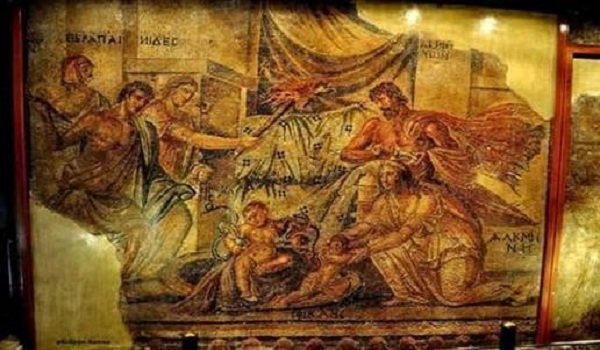The scenario of Hercules birth was revealed in a mural dating back to the end of the second century and the beginning of the third century AD. It was discovered in 1987 in the city of “Homs” in the “al-Arbaeen neighborhood”, and was transferred to the Museum of Al-Maarrah.
The ground mural is 18 feet long, 8 feet high and it weighs 2000 pounds. It is one of the prominent and most beautiful mosaic artifacts left by a Syrian artist ever. It expresses the artistic schools that the artist was influenced with during the Roman era, including impressionism and realism, in a unique symbolic way.
Hercules mosaic painting, is considered one of the most prominent mosaic works that embody the ideal classical tendency in the ancient Syrian art, through interest in realistic depictions of shapes represented by the best aesthetic values in the human form, which are drawn from the Greek heritage.
Its scenes are characterized by its mythological themes that underline an important memory of the birth of Hercules, “the god of power in the Greeks”, through dramatic expressions and human conditions paved by the artist. The artists paved the dark colors that express the tragedy of the scenes and focused on the clothing of persons and showed the folds of this dress through the movement of the characters . It is believed that the mosaic mural was smuggled during the Syrian events in recent years.
This mural is consistent with the Syrian mosaic paintings, especially those in the north of Idlib governorate that represent the character of Hercules in many different places and scenes. The first scene is the birth of “Hercules” and his brother Iphicles and the second shows Hercules, coming in the form of a full-body man to Zeus, “Lord of Lords”, to give him immortality. In the fourth scene, Hercules is depicted as a man stabbing snakes that have climbed an apple tree.
Amal Farhat

